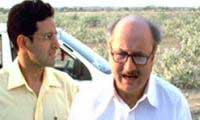Though some companies like Exxon Mobil, Gap & General Mills are perhaps miffed with Hip Hop artists getting creative with their corporate logos & ads – I think this is a great opportunity – especially for youth brands.
Imagine if you invite users to come forward and create their own remixed versions of the corporate ad jingles or better still give an unusual twist to the TVCs!
With technology by their side and the desire to express themselves; an opportunity like this can only make the youth happy.
Imagine the kind of stickiness this act could have. It is a great candidate for a news story in itself.
While the ads try to ‘influence the users’ remixed ads could well be the way, as the original ad remixer Eric White said, “to influence the company right back.” Companies could learn a lot about their user and what they think and feel about the brand, from what they make.
With companies spending so much money to ‘bombard’ the audience with brand messages and still wondering if it did exactly what they wanted the message to do; it is time that they took a break and let the users do their own thing. Creative collaborating is another way to position their brands as unstuffy and open.
Remixing ads could almost be like turning the interesting whispers in an auditorium into something useful for everyone.
And if it is consumer’s, even a whisper can sound convincing!



















